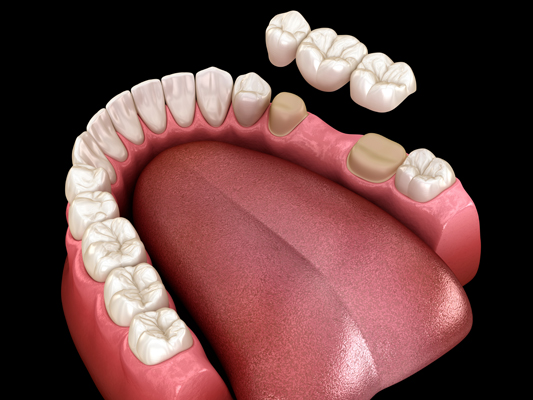The Longevity of Dental Bridges: What You Should Know

Dental bridges are an effective and popular way to restore missing teeth, offering cosmetic and functional benefits. When you properly care for and maintain your bridge, it can significantly improve oral health and restore the confidence you have in your smile. However, several factors can influence the longevity of dental bridges.
Understanding dental bridges
Dental bridges are prosthetic devices that replace one or more missing teeth by anchoring them to adjacent natural teeth or implants. They help maintain facial structure, prevent the remaining teeth from shifting, and restore chewing and speaking functions. Although dental bridges can last long, their lifespan depends on several factors.
The average lifespan of dental bridges
Depending on the type of material used, the average lifespan of dental bridges ranges from five to fifteen years. They can often last even longer with proper oral hygiene and regular follow-up dental visits. The material used in the construction of the bridge can impact the bridge's overall durability. Popular materials used include:
- Porcelain
- Ceramic
- Porcelain-fused-to-metal
- Metal alloys
- Zirconia
- Composite resin
For example, zirconia is known for its strength and resistance to wear, which can contribute to extending the longevity of the dental bridge.
The impact of oral hygiene
The patient's oral hygiene can impact the longevity of their dental bridge since the health of the supporting teeth, also known as abutment teeth, is essential for the overall success of the bridge. Daily brushing, flossing, and using interdental brushes or floss threaders can help prevent decay and gum disease. Additionally, the patient should schedule regular professional cleanings and checkups to monitor the dental bridge's condition and the surrounding tissues' health.
The importance of function and location
Another key factor that affects the durability of dental bridges is the location in the mouth. Bridges placed in areas that endure significant biting force, such as the back molars, may experience more wear and stress over time. As a result, they may require more frequent professional evaluation or earlier replacement than bridges placed in other areas of the patient's mouth.
Lifestyle habits that affect the lifespan of dental bridges
Lifestyle choices also contribute to the lifespan of dental bridges. Habits such as teeth grinding (bruxism), chewing on hard objects, or using teeth as tools to open packages can cause damage to both the bridge and supporting teeth. In cases where signs of bruxism are present, using a night guard can help protect the restoration and the natural teeth from excessive force during sleep.
What to do when dental bridges need to be replaced
In cases where a bridge fails or reaches the end of its service life, replacement options are available. The dentist can assess the condition of the existing bridge and recommend the most appropriate course of action. One option may involve creating a new dental bridge to replace the old one. However, the patient may also consider alternatives such as a partial denture or dental implants.
Learn more about dental bridges
With the right care and maintenance, dental bridges can last for years. Are you curious about how to protect your dental bridge? Call our Burbank office to learn more or to schedule an appointment.
Request an appointment here: https://www.mediacenterdental.com or call Media Center Dental at (818) 473-1133 for an appointment in our Burbank office.
Check out what others are saying about our dental services on Yelp: Dental Bridges in Burbank, CA.
Recent Posts
When you need dental bridges, your dentist will work with an oral surgeon to find the best solution for your problem. There are a few things that you can do in preparation for this procedure. This blog post outlines some of the steps you should take before going in for dental bridges surgery.Make a list…
It is helpful to understand the different types of dental bridges to determine why your dentist may recommend a specific one. All dental bridges accomplish the same goal, which is to replace a missing tooth or a section of missing teeth. However, depending on the patient’s goals and the status of their oral health, a…
A dental bridge is one of the most popular solutions for lost teeth. According to the American Dental Association, most adults between ages 20 and 64 have at least one or two decayed or missing teeth. Fortunately, with a dental bridge, a dentist can cover the gap between the teeth to restore your smile.The following…
In dentistry, a dental bridge is one of the popular options for closing the gap left by a lost or extracted tooth. Bridges are typically made up of crowns on the sides of the gap, which cover adjacent health teeth, called the abutment teeth. These teeth support the replacement teeth, which could be one or…


